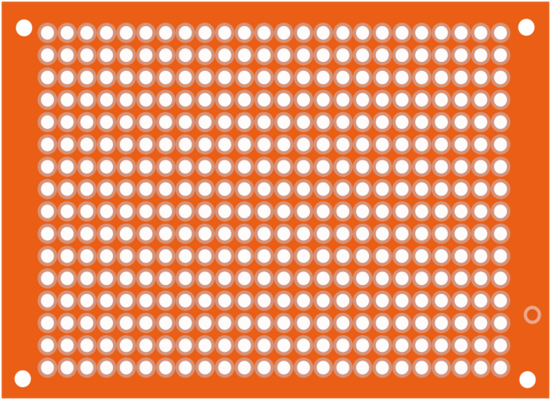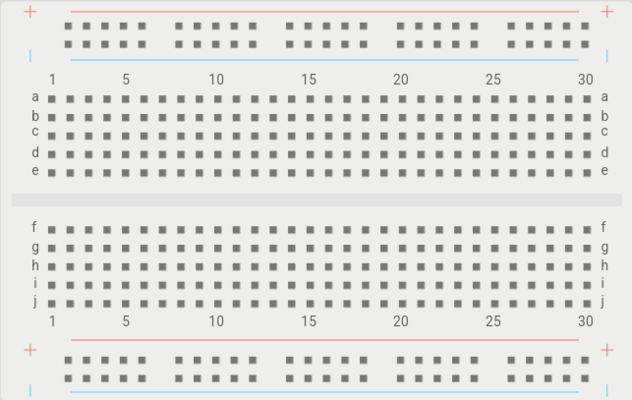Why Plaquette?
Plaquette is a groundbreaking creative coding framework designed to empower creative practitioners by simplifying the way they work with real-time signals in tangible computing applications. By bridging the gap between low-level electronics and high-level creative expression, Plaquette enables creators to focus on what matters most: bringing their visions to life.
Note
Plaquette is a French noun pronounced pla-kett which refers to prototyping plates or boards (“plaquette de prototypage”) commonly used in designing electronic projects.

|

|
The Need for a New Standard
Media artists, interactive designers, digital luthiers, and electronic musicians constantly engage with real-time signals. However, when working with tangible computing systems such as embedded sensors, robotics, connected objects, and electronic music instruments, available tools such as Arduino are often very low-level and lack expressivity. Creative practitioners thus struggle to implement their vision directly using such platforms.
Consider the following case of learning how to work with a simple lignt sensor (eg. photoresistor) connected to an Arduino board on analog pin 0. The code reads as follows:
int value = analogRead(A0);
The value that is read is a raw 10-bit value returned by the Arduino board’s Analog to Digital Converter (ADC), an integer between 0 and 1023. But how is this value intuitively useful for an artist who wants to use this value creatively?
For example, what if one wants to react to a flash of light? Well, one solution would be to look at the value and compare it to a threshold:
if (value > 716) {
...
}
There are two problems with this approach.
Firstly, while it might work under certain lighting conditions, it will likely stop working if these conditions change, forcing us to make adjustments to the threshold value by hand.
Secondly, and perhaps more importantly, this piece of code does not really express what we are after. As creative practitioners, we don’t care whether the light signal is above 716 or 456 or whatnot: what we really want to know to detect a flash of light is whether the light signal is significantly high compared to ambient light.
What this example shows is that the way we are teaching and learning about sensor data is inefficient for creative applications. In other words: raw digital data lacks expressiveness.
Continuing with our example, consider how one would take the input value and directly reroute it to an analog (PWM) output on pin 9:
analogWrite(9, value / 4);
Why do we need to perform that division by 4? That’s because while the ADC gives us 10-bit values (1024 possibilities), the PWM only supports 8 bits (256 possibilities) forcing us to divide the incoming value by 4 (2 bits). But again, why is this detail important to know for an artist, designer, or musician? And what exactly does it have to do with our expressive intention?
Meet Plaquette
As a way to address these issues, Plaquette offers a general-purpose, standard interface for simple, real-time signal processing tailored for media artists.
Plaquette’s key objectives are:
Empowering creators to focus on the creative aspects of their work, rather than getting lost in irrelevant numerical details, which supports a smoother learning process.
Providing accessible tools for creative practitioners that capture high-level concepts such as “normalizing” and “detecting peaks”, without requiring deep technical knowledge of complex techniques like Fast Fourier Transforms or Chebyshev filtering.
Facilitating teamwork and interoperability by promoting an intuitive, cross-platform approach to real-time signals, such as by keeping all signals consistently scaled between 0 and 1 for easier integration across different applications.
Plaquette achieves these goals by embracing the following core principles:
Ease of use: Offering a carefully selected set of functionalities that address the most common challenges faced by creators—keeping things simple while solving 95% of typical use cases.
Real-time performance: Enabling smooth, uninterrupted interactions to ensure responsiveness in dynamic environments.
Signal-oriented approach: Focusing on meaningful signal manipulation rather than dealing with arbitrary numerical values such as 255, 1024, 716, or 42.
Robustness: Adapting to changes in the sensory context without breaking down, ensuring reliability in unpredictable and evolving environments such as art installations, live performances, and public art.
Interoperability and extensibility: Leveraging an object-oriented architecture that seamlessly integrates with the Arduino ecosystem, ensuring compatibility and future scalability.